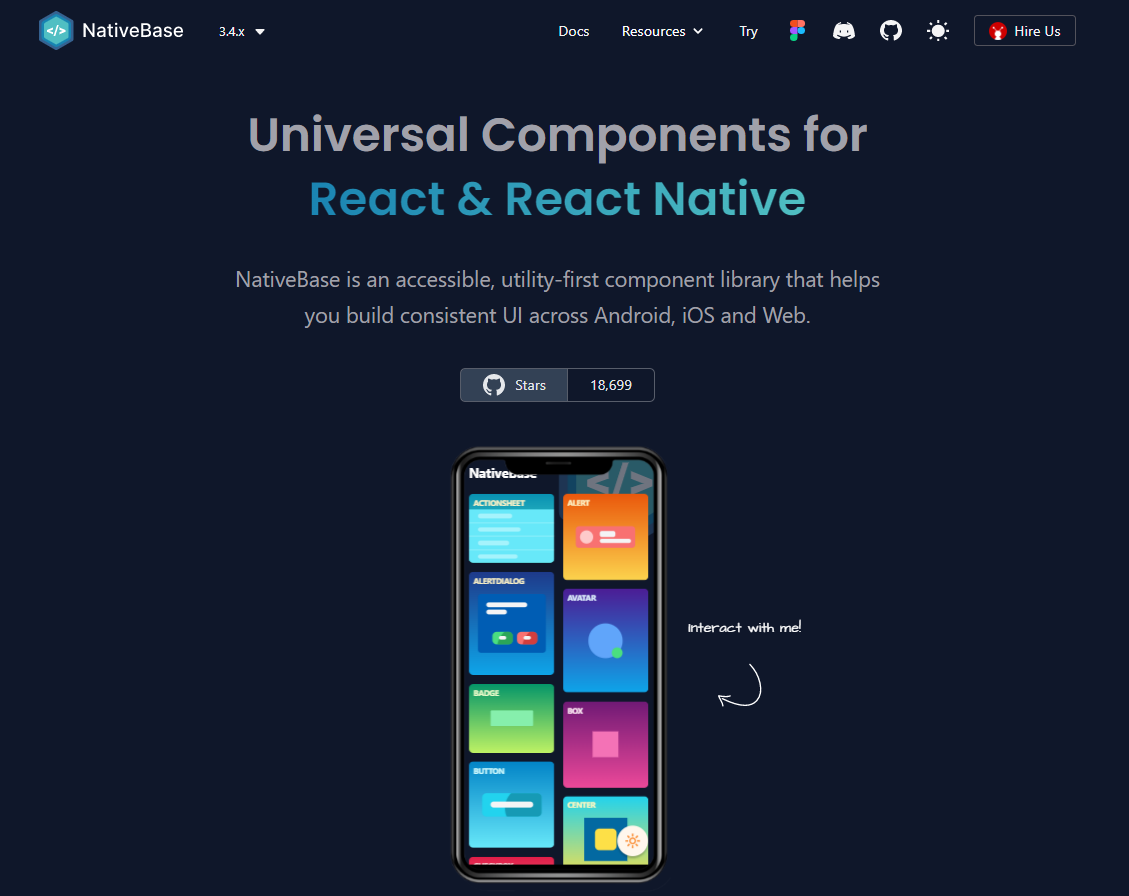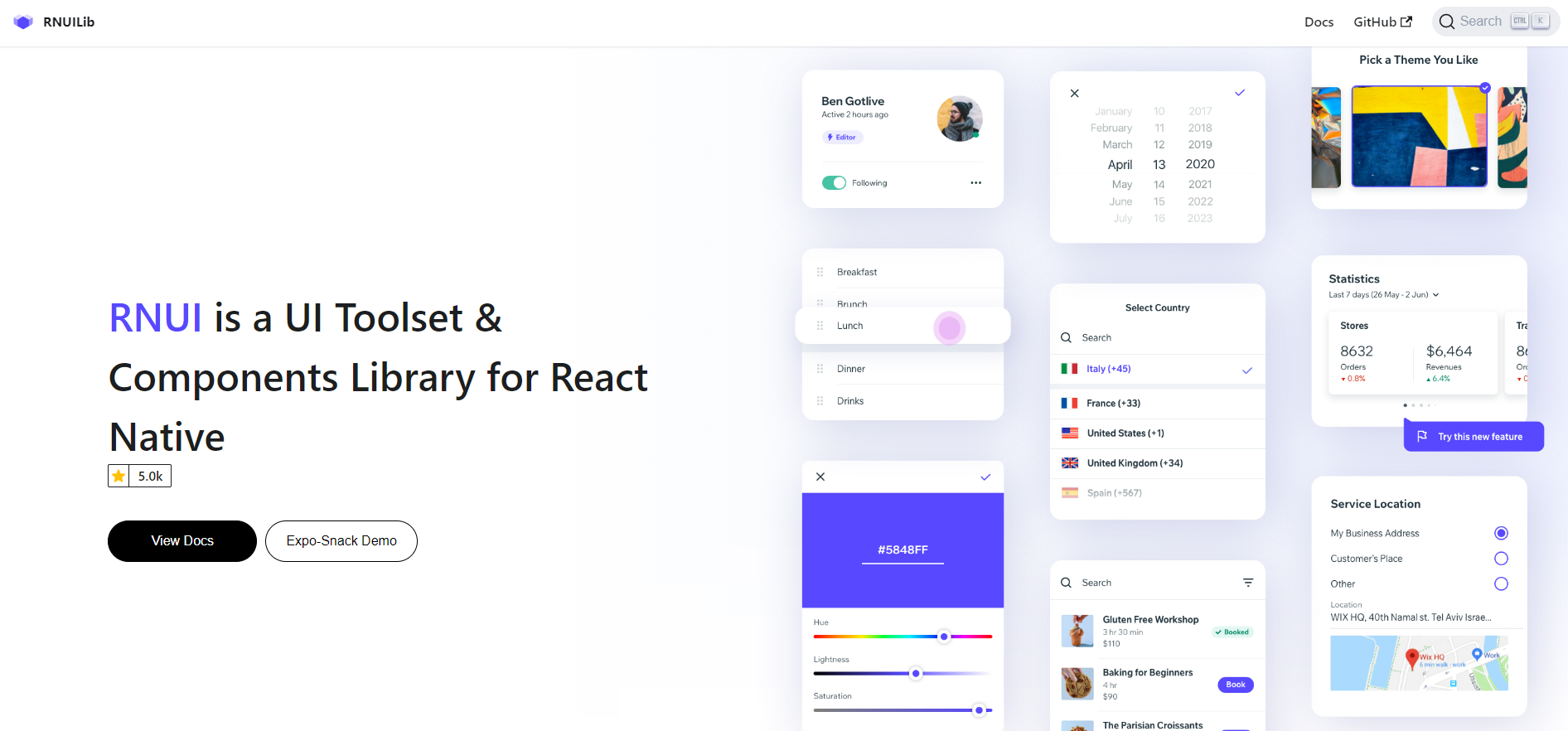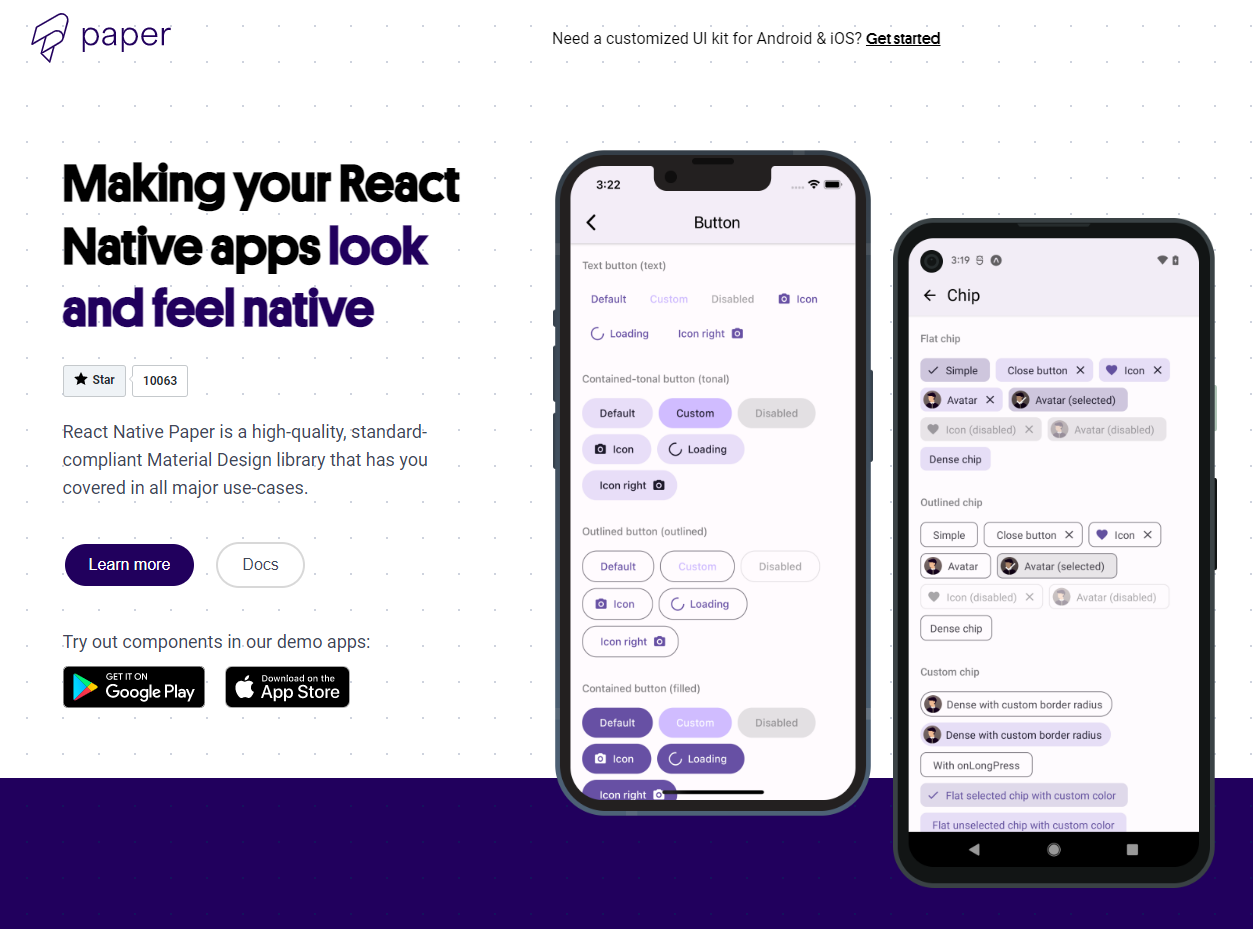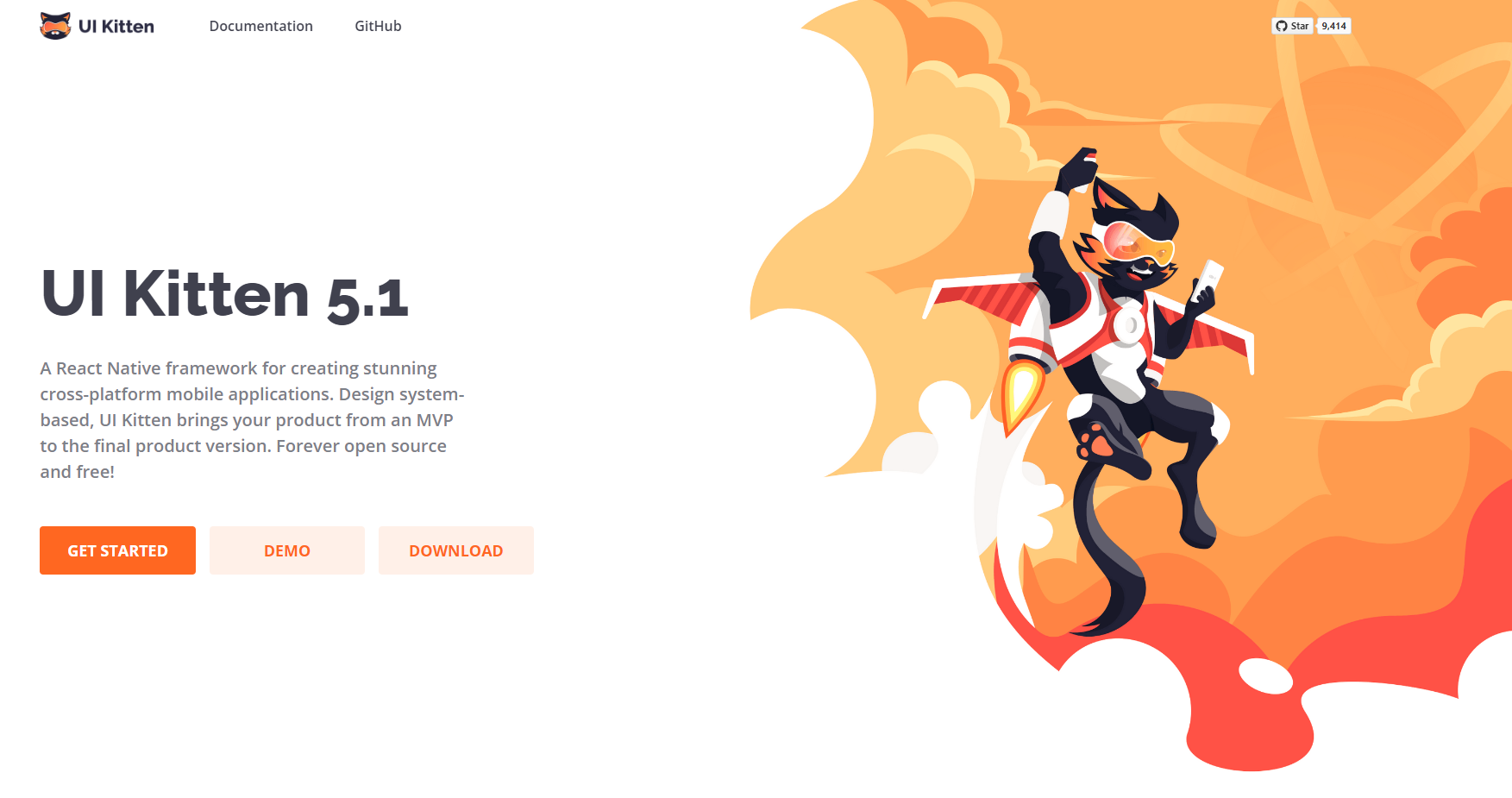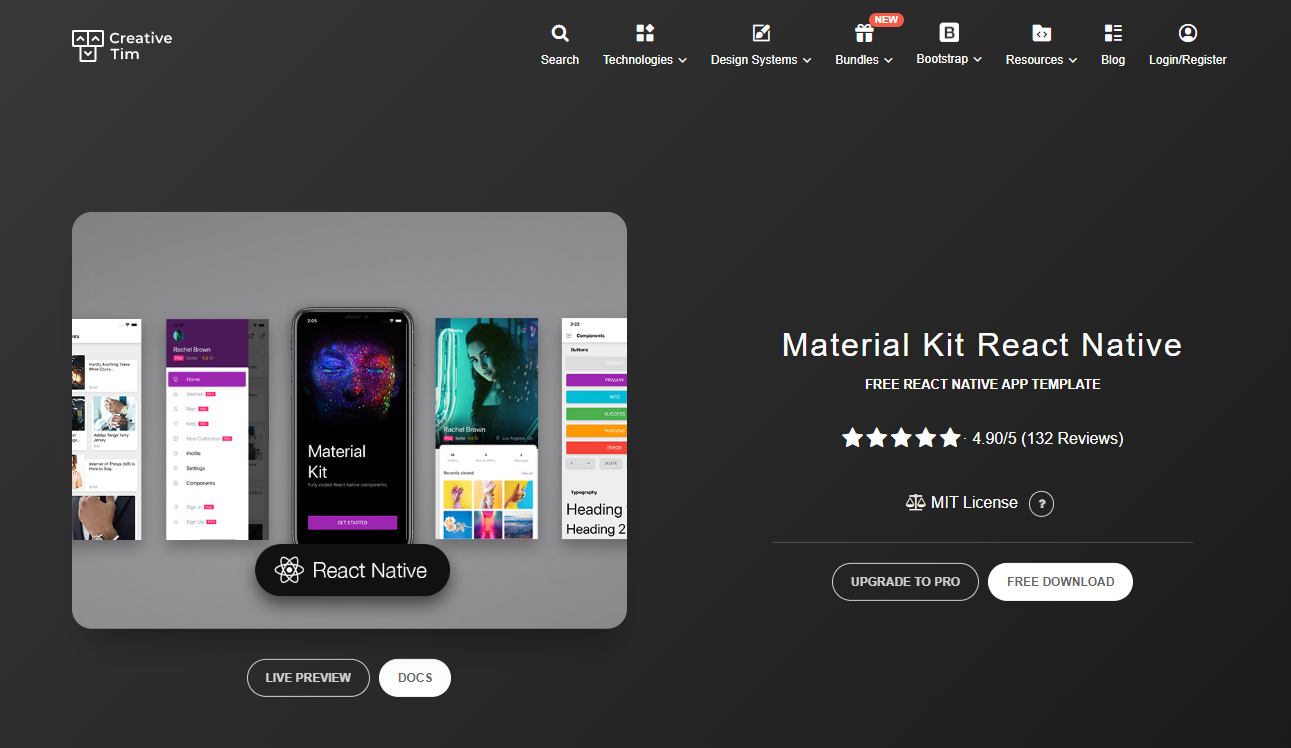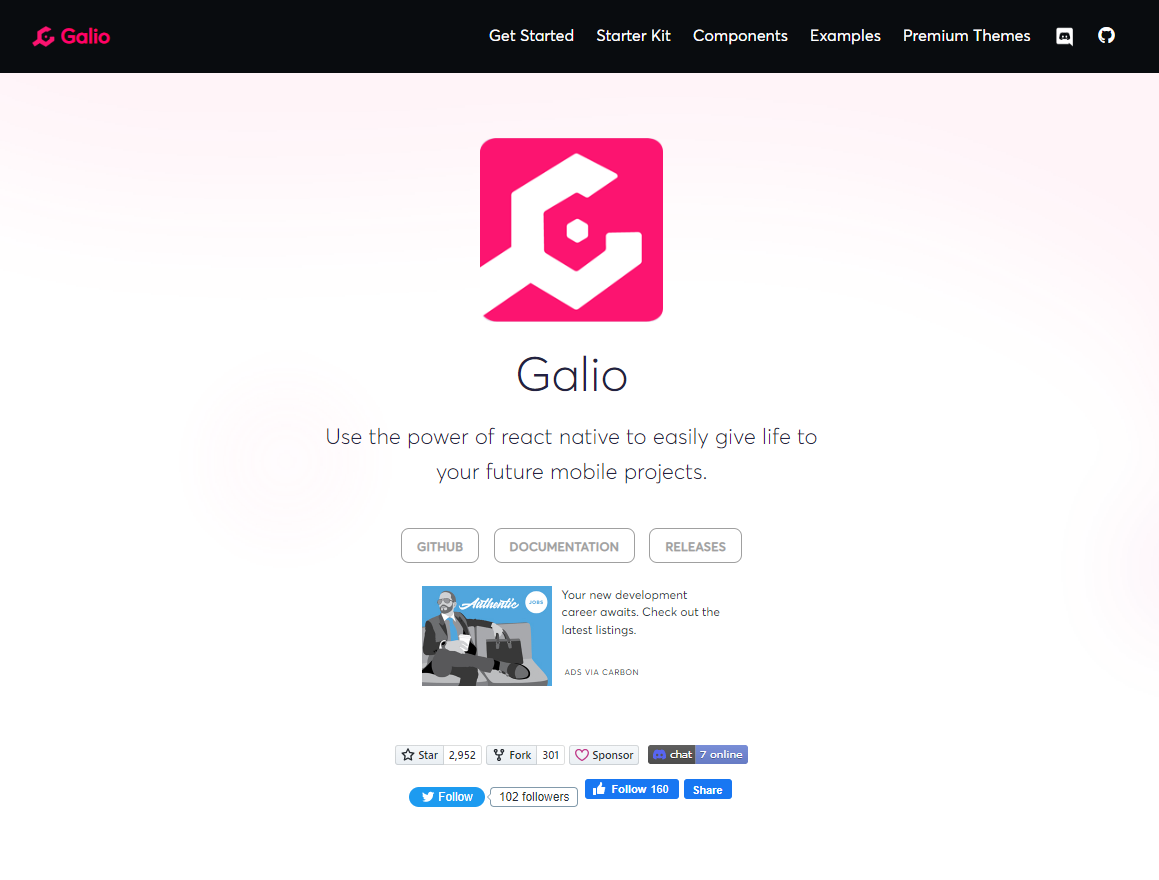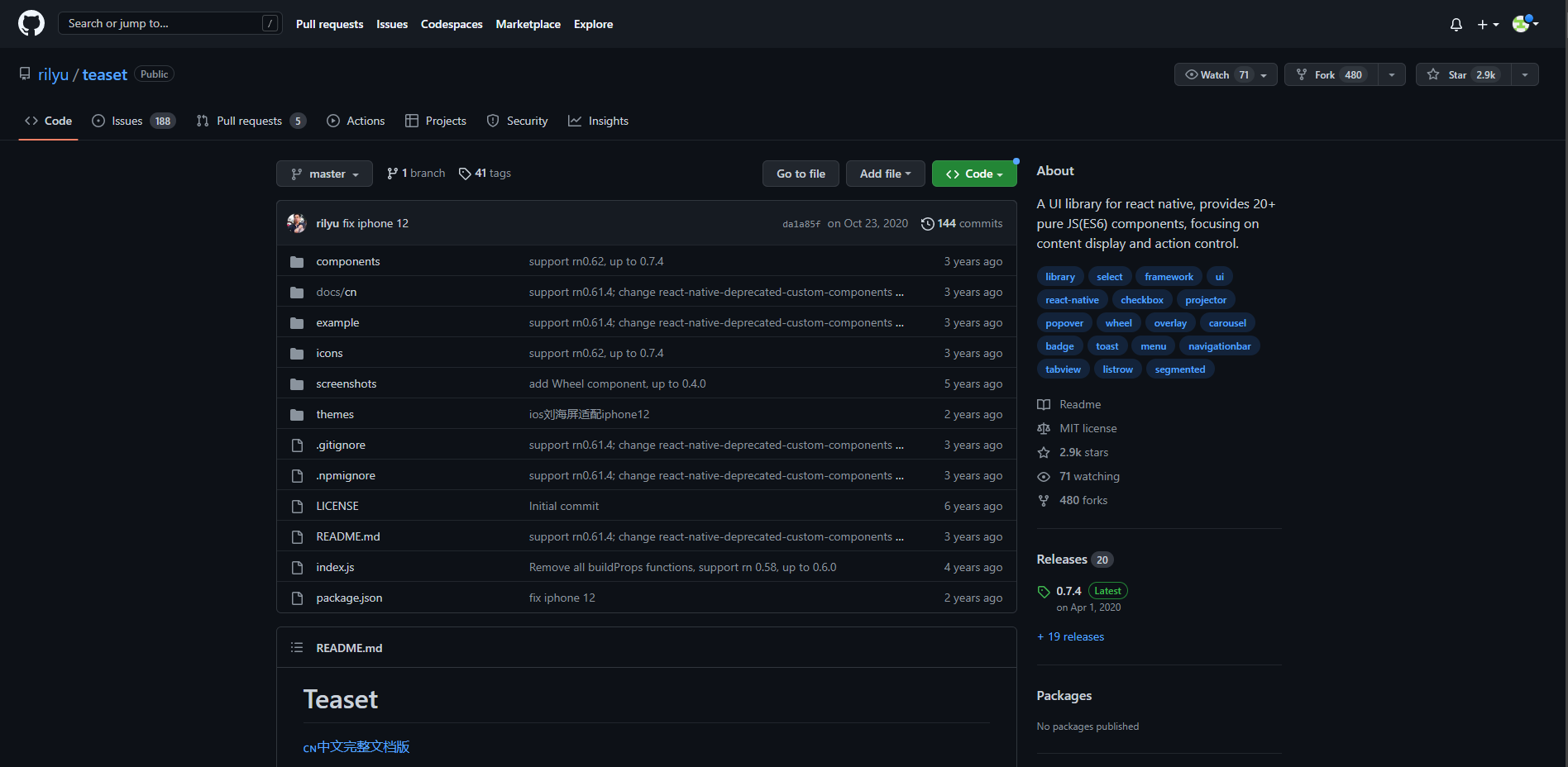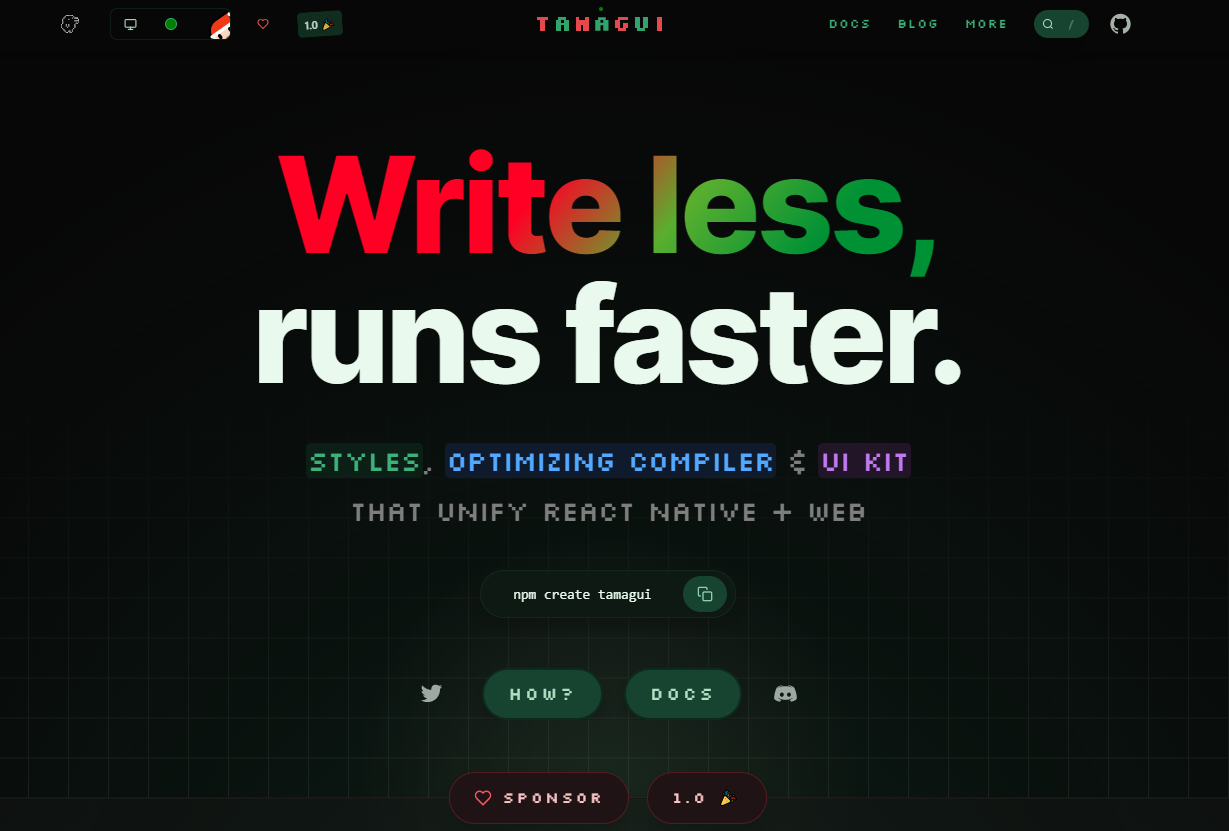Top Component Libraries for React Native Applications
Top Component Libraries for React Native Applications
React Native is one of the most widely used component-based, cross-platform mobile app development frameworks. As a result, many specialized component libraries are available to improve the development process. But choosing one isn't easy since they all have unique features.
In this article, I will discuss 10 React Native component libraries with their pros and cons to help you choose the best one for your project.
1. React Native Elements
Source: https://reactnativeelements.com/
GitHub: https://github.com/react-native-elements/react-native-elements
React Native Elements is a styling library that wraps each React Native View component with styling based on the props you specify. React Native Elements' main goal is to make it easier to theme your entire app by building on top of the fundamental React Native components.
React Native Elements has more than 23.1K GitHub stars and more than 90K weekly NPM downloads.
Pros
Provides a consistent design across the web, iOS, and Android applications.
30+ components are included to speed your development.
React Native Elements is constructed entirely in TypeScript.
Supports Expo.
You can easily customize any of our components.
Cons
React Native Elements is not efficient for complex interfaces.
2. NativeBase
Source: https://nativebase.io/
GitHub: https://github.com/GeekyAnts/nativebase
NativeBase is a utility-first component library for React Native. It is highly themeable and allows you to customize the components as required. In addition, NativeBase will enable you to maintain a unique theme across mobile and web applications since it supports web, iOS, and Android.
NativeBase has more than 18.4K stars on GitHub and 70k+ weekly NPM downloads.
Pros
You can operate any other third-party libraries with NativeBase.
Provides React Hooks support through React Native ARIA.
NativeBase offers nearly 40 components, including action sheets, menus, spinners, popovers, breadcrumbs, and more.
Supports utility props.
Cons
Lack of documentation and community support since it's new.
3. RNUI (React Native UI Library)
Source: https://wix.github.io/react-native-ui-lib/
GitHub: https://github.com/wix/react-native-ui-lib
React Native UI Library (RNUI) offers more than 20 customized components for your React Native application. In addition, it has especially animated components, like an animated image and an animated card reader.
React Native UI Library has 5K+ stars on GitHub and more than 10K weekly NPM downloads.
Pros
Support both android and iOS platforms.
Out-of-the-box accessibility support.
The documentation is excellent, and you can easily understand it, even if you are a beginner.
Cons
Specific components or features may require certain dependencies. For example, the blur feature of card requires the installation of the
@react-native-community/blurpackage.
4. React Native Paper
Source: https://reactnativepaper.com/
GitHub: https://github.com/callstack/react-native-paper
React Native Paper is another free and open-source component library. It follows Google's Material Design guidelines and provides a set of excellent production-ready components covering any use case. Furthermore, you can use React Native to maintain a consistent design across the web and mobile applications since it supports web, iOS, and Android.
React Native Paper has 10.1K+ stars on GitHub and over 119K weekly NPM downloads.
Pros
Take care of design and UI logic.
Provides live demos.
Compatible with screen readers, readability tools, and right-to-left languages.
Meets high expectations set by iOS and Android ecosystems.
Simple to switch between dark and light modes, change the default colors, or add your own.
Cons
Poor documentation.
Component extensibility issues.
Lack of components like Tabs, Bottom Sheet, Date Picker, and Time Picker.
5. UI Kitten
Source: https://akveo.github.io/react-native-ui-kitten/
GitHub: https://github.com/akveo/react-native-ui-kitten
UI Kitten contains many UI components for creating different apps, such as chat, e-commerce, and social media management. The ability to switch themes in place without reloading the application is UI Kitten's best feature. UI Kitten allows you to concentrate on business logic while it takes care of your application's visual appeal.
UI Kitten has more than 9.4K stars on GitHub and around 10K weekly NPM downloads.
Pros
You can choose components built on the Material Design System or the Eva Design System.
20+ general-purpose UI components.
Good documentation with many examples.
Cons
UI Kitten won't provide full support if you don't buy the starter kit.
Limited number of styling components available.
6. Shoutem UI
Source: https://shoutem.github.io/docs/ui-toolkit/introduction
GitHub: https://github.com/shoutem/ui
Shoutem UI allows you to create apps by fusing extensions, much like how you would add plugins to a WordPress website. Extensions are available for various purposes, including images, movies, products, events, and restaurant menus.
Shoutem UI includes UI components, themes, and animations as a React Native UI Kit. Every element in the library is composable, customizable, and supports iOS and Android. Furthermore, it has an animation toolkit, a UI toolkit, and themes to make developers' work more accessible.
Shoutem UI has more than 4.8K stars on GitHub and around 800 weekly NPM downloads.
Pros
Provides a good user experience.
Shoutem offers many customization options for typography, colors, themes, and layouts.
Good documentation.
Provides animations.
Cons
Lack of features in the latest versions. For example, the regional management or newsletter features in V4 are not present in V5.
Emails are used for customer service. So a significant time to get a response.
7. Material Kit React Native
Source: https://www.creative-tim.com/product/material-kit-react-native
GitHub: https://github.com/creativetimofficial/material-kit-react-native
Material Kit React Native is a fully coded app template built over React Native, Galio.io, and Expo to create powerful and beautiful mobile applications. Material Kit React Native has been completely redesigned to look like Google's Material Design, which is clean and user-friendly. You will love this React Native Kit if you enjoy Google's Material Design.
Material Kit React Native has more than 500 GitHub stars.
Pros
Provides 200 variations of components, like buttons, inputs, cards, and navigations.
Every component can have different color variations, which you can easily change inside the theme file.
Each component has a description and usage examples.
Provides pre-built examples screens.
Cons
Poor customer support compared to other React Native component libraries.
8. Galio
Source: https://galio.io/
GitHub: https://github.com/galio-org/galio
Galio is an open-source React Native component library designed with care by developers for developers. It provides ready-made elements and beautiful foundation themes with multiple customization options for your project.
Galio has 3K+ stars on GitHub and more than 900 weekly NPM downloads.
Pros
An MIT-licensed project that is entirely free to use.
Provides component demos, guides, and how-tos to help you get started quickly.
60+ elements.
Suitable for both developers and designers.
Cons
Relatively new compared to other libraries and therefore may lack community support.
Premium themes can be expensive for individuals or small-scale organizations.
9. Teaset
GitHub: https://github.com/rilyu/teaset?ref=madewithreactjs.com
Teaset is another top-notch React Native component library, perfect for people who value simplicity and design. It mainly focuses on content display and action control components. Although it is pretty simple, you can find multiple variations of the components.
Teaset has 2.9K+ stars on GitHub and around 200 weekly NPM downloads.
Pros
Provide 20+ pure JavaScript (ES6)-based components.
Supports Redux.
Cons
It focuses more on how information is presented and actions are managed rather than the appearance.
10. Tamagui
Source: https://tamagui.dev/
GitHub: https://github.com/tamagui/tamagui
Tamagui is an exciting UI tool kit that supports both React and React Native frameworks. The most highlighted feature of Tamagui is its optimizing compiler. It performs platform-specific optimizations on components and allows developers to share stunning, high-performing UI components between web and mobile applications. In addition, Tamagui supports multiple themes, responsive styling, media queries, and animation.
Tamagui has 4.1K+ stars on GitHub and more than 2,900 weekly NPM downloads.
Pros
Supports SSR-first atomic CSS
Can change animation drivers without updating the code.
Supports tree flattening, partial evaluation, hoisting, and dead-code elimination.
Supports responsive props and hooks.
Cons
Lack of community support compared to other solutions. However, it has great potential to grow.
Recap
Component libraries help developers create applications with custom UI elements and a good user experience. This article discussed 10 UI component libraries for React Native with their pros, cons, and stats. I hope this helps you choose the best UI component library for your React Native application.


